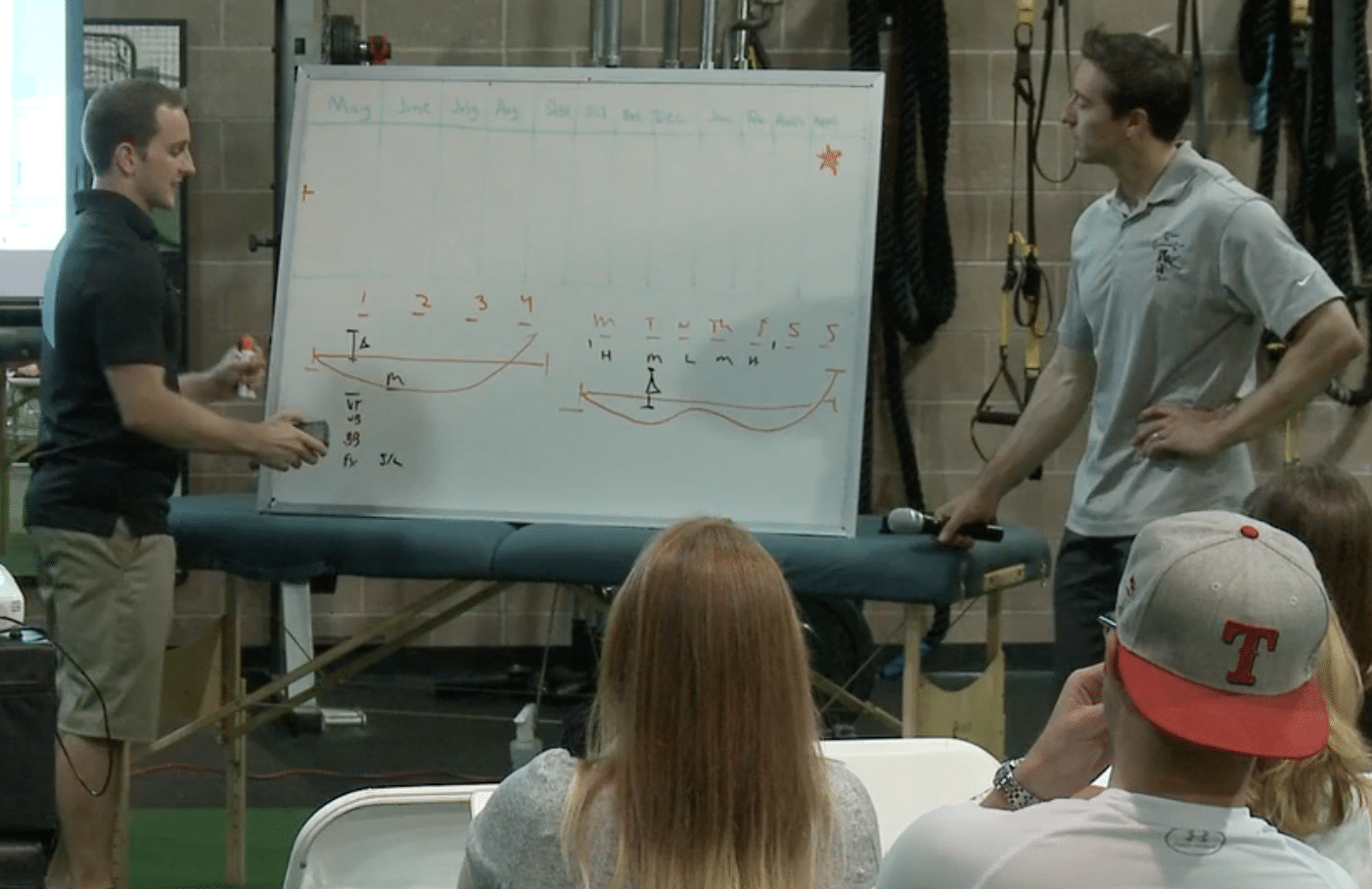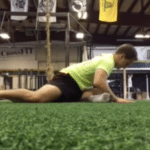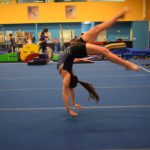How Many Impacts and Hyperextensions Do Gymnasts Actually Take?
Another set of the age old questions in gymnastics; “How much is too much?”, “How much is enough to get a skill?”, and “How much until we get nervous about injury?”A big concept that myself and other gymnastics healthcare providers talk about is that we need to be objectively monitoring the amount of volume put on a gymnast. As coaches, gymnasts, or healthcare providers have you ever stepped back to think about just how many time a gymnast impacts the equipment or hyper extends their back during a practice?
Well, in my nerdy curiosity I did a little mini research study at our gym. I took 3 of our level 8/9 gymnasts and for 2 weeks told them to literally write down everything they did in a journal. One gymnast was more impact dominant, the other was more hyper extension based and the third was combination both (read more about the concept of a “skill profile” here). From the second they walked into the door to their last turn they wrote down everything from warm ups, to drills, to side stations, to routines, and so on. They did one week when we had a meet, and one week when we did not have a meet. Each morning over coffee I tallied the numbers from the night before, and summarized them at the end of 2 weeks. I divided them into
- Double leg soft surface (resipit landing, stacked mats)
- Double leg hard surface ( hard floor, dismounts, vault landing, etc)
- Single leg soft surface (leap drills to panels…not seen as much)
- Single leg hard surface (one leggedjumps and leaps on floor or beam)
- Hyper extension skills (back/front handsprings,yurchenko, FWO/BWO, etc)
Some of these blew me away. In two weeks, one gymnast impacted the ground or equipment 894 times. Another gymnast hyper extended her back 511 times over two weeks! This suggests that when thinking about longer time periods, we could be looking at thousands of hyper extensions and impacts per month, with thousands more per season.
Now don’t get me wrong, I know that this is not the most scientific and unbiased representation. I understand there is a ton of error that could have occurred, inaccuracies in recording, and user error in how I counted. This was 10 days of training with about 46 clocked hours. There are plenty of other gyms out there that train more and may we be over this, there are others that train way less and could be under it. This is a very small sample out of a few of my gymnasts, and by no means represents the entire sport. But this is still pretty wild to actually see somewhat manifest on paper.
Why Does This Matter?
Seeing this and also having this conversation with a lot of gymnastics patients has definitely peaked my brain as to why so many overuse injuries in the lower body and lower back may be coming with young gymnasts. If we don’t track their volume, understand the concept of a skill profile, don’t mix up their training to be more variable, and may not promote optimal recovery strategies to handle and adapt to the stress of training, it may be a huge spark for an overuse injury. So what are the take aways from looking at something like this?
- Even if it isn’t a perfect method, finding some way to objectively track turns, sets, impacts, andhyper extensions
can be huge for preventing injury and optimizing performance. There is no “golden rule” for how many turns we should be worried about, but that is a future research goal of mine to pursue.
- The gymnasts that have a bias towards one movement pattern (lots of hyperext
or lots of
impact
) should be put under even higher monitoring. They will drift to the same patterns, and possibly the same tissue being overloaded. If you wanna geek out, check this article out on coordinative variability and overuse injuries.
- One way to prevent overload for a certain movement pattern or type of skill is to plan out and vary training focusesbetween
events. For example, I have created our practice plan so that the day we do impact tumbling on vault/floor, we avoid lots of impact on beam. The days we do series on beam and Yurchenko work on vault, we don’t tumble as much on
floor
and do dance, leaps, and jumps instead.
- The quality of hyper extending (avoiding hinging overload in lower back) and quality of landing (proper squat pattern with angular displacement and control)can not
be stressed enough. If the gymnast is taking tons of high volume with not the best movement mechanics, it again may spark an overuse problem fast.
- Varying surfaces, utilizing mixed methods of training, and spreading volume out with drills/progressions can go a long way to get great skill development but not always be stressing the body.
Concluding Thoughts
So these are just my thoughts on the concept, but I hope it was really eye opening for some people like it was for me. Mini experiments and insights like this are what make me continue to always be thinking on how to stay ahead of the problem. We kind of let it pass under the radar but when you consider drills, side stations, warm ups, timers, and multiple events you may be surprised. They add up quick and we always have to remember that the forces of gymnastics are very real, and sometimes surprisingly highAnyone who will be a USAG Region 6 congress can hear me chat more about this idea when I lecture on preventing Achilles injuries. Take care,
– Dr. Dave
References
- Hamill J1, Palmer C, Van Emmerik RE, Coordinative Variability and Overuse Injury; Sports Med Arthrosc Rehabil Ther Technol. 2012 Nov 27;4(1):45.doi
: 10.1186/1758-2555-4-45
- Caine D., et al. The Handbook of Sports Medicine In Gymnastics. First Edition. John Wiley and Sons, 2013
- McGill, S. Lower Back Disorders. Second Edition. Human Kinetics, 2007
- McGill, S. Ultimate Back Fitness and Performance: Fifth Edition. BackFitpro, Inc. 2014







